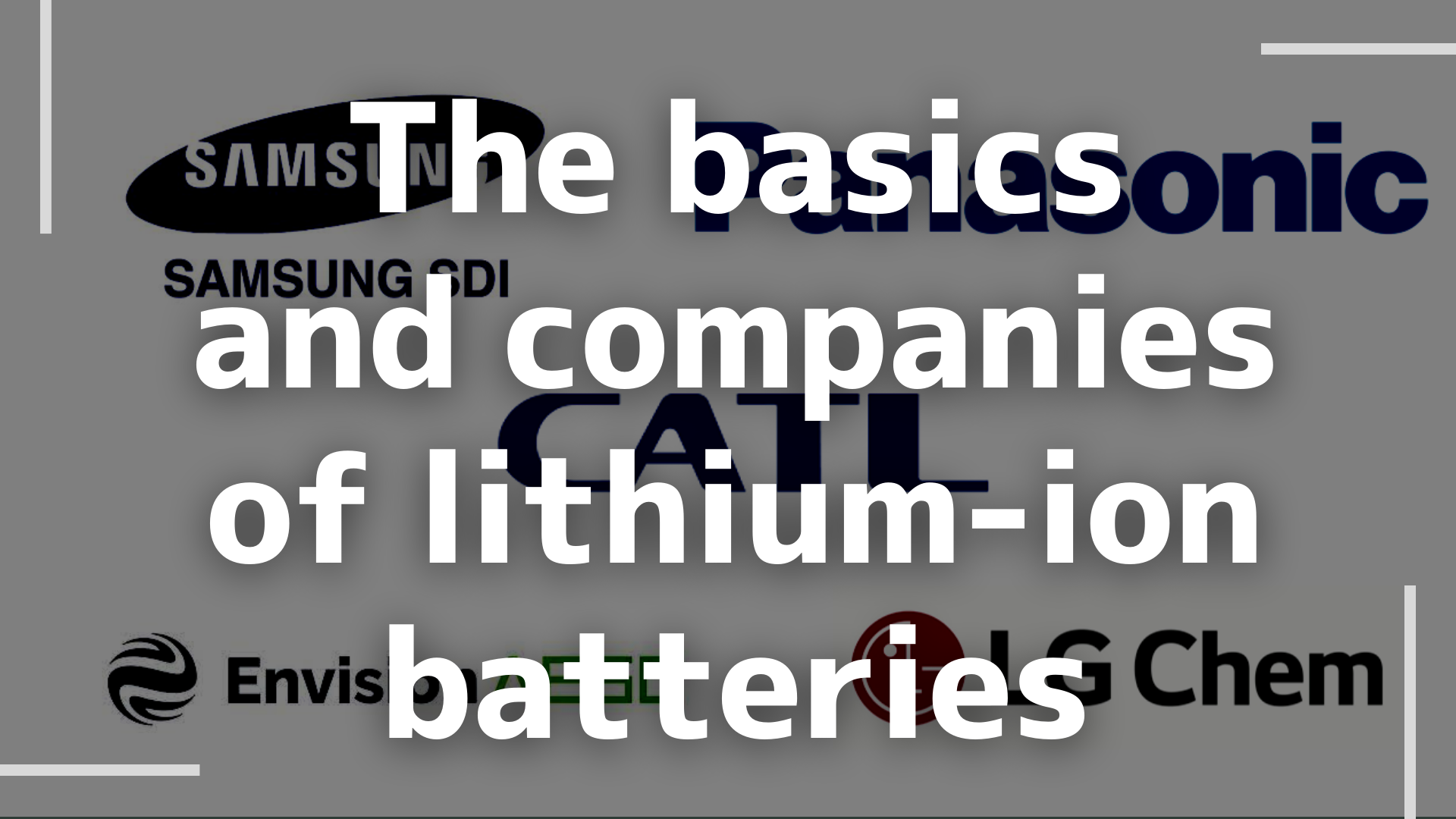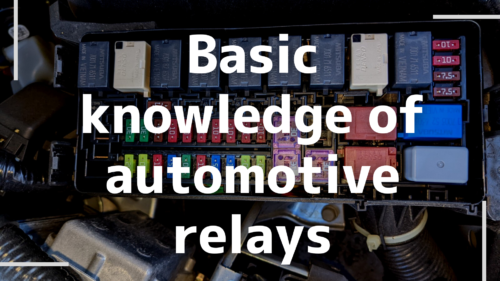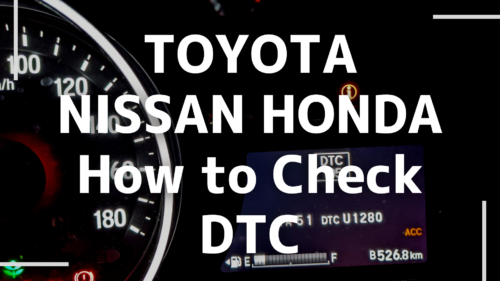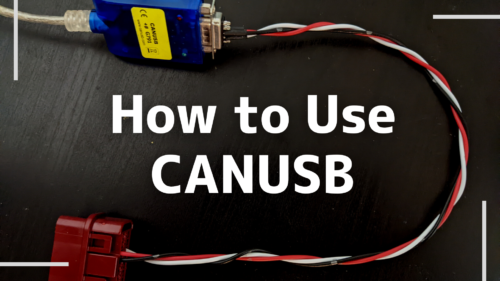This article provides basic knowledge of Li-ion batteries, significant manufacturers, and major models equipped with Li-ion batteries.
Main Materials
I describe the four main components that make up a battery cell.
It is mainly the cathode and anode materials that determine performance.
Cathode Materials
Cathode materials are used in the cathode of batteries.
It has the most significant impact on the performance of lithium-ion batteries.
Anode materials
Athode materials are used in the anode of batteries.
It is the second most significant factor affecting the performance of lithium-ion batteries.
The appropriate material is selected based on the combination with the cathode.
Separator
The separator is an insulating material placed between the cathode and anode materials.
Electrolyte
The electrolyte is an electrolyte that facilitates the transfer of lithium ions between the positive and negative electrodes.
Cathode Materials
The three main cathode materials currently in use are NMC, NCA, and LFP, with NMC and NCA accounting for approximately 70% of the total. The characteristics of each and the major companies employing the materials are listed below.
\(\displaystyle NMC:LiNi_{x} Co_{y}Mn_{z}O_{2}\)
(nickel–cobalt–manganese oxide manganese)
It is called the ternary system and is the most used material.
Increasing the nickel ratio increases the capacity.
\(\displaystyle NCA:LiNi_{0.8}Co_{0.15}Al_{0.05}O_{2}\)
(Lithium Nickel-Cobalt-Aluminum Oxide)
This cathode material is said to have the highest energy density.
It is said to use less Co than NMC.
\(\displaystyle LFP:LiFePO_{4}\) (Lithium iron phosphate)
Although LFP does not have high energy density and low-temperature performance, it is a low-cost, heat-resistant, safe, and durable material.
LFP attracts attention because of its low risk of price hikes due to the absence of nickel and is used mainly by Chinese manufacturers.
Anode Materials
Graphite is commonly used as the anode material and is used in most car models.
There is a lot of research being done to increase capacity by adding silicon to the anode material graphite.
It has been applied to Tesla model 3 and others.
Cell shape
There are three types: cylindrical, square, and laminated.
Cylindrical lithium Cells
Prismatic lithium cell
Pouch lithium cell
Major Battery Manufacturers
The companies are listed below, sorted by market share.[9]
| Share | Cell shapes | Battery makers | Countries | Main car models | Main cathode materials |
|---|---|---|---|---|---|
| 25% | Prismatic | CATL | China | Tesla Model 3 | LFP |
| 23% | Pouch | LG | Korea | Tesla Model Y | NMC |
| 19% | Cylindrical | Panasonic | Japan | Tesla Model 3 | NCA |
| 7% | Prismatic | BYD | China | BYD Tang | NMC |
| 6% | Prismatic | Samsung | Korea | Hyundai Ioniq 5 | NMC |
| 5% | Pouch | SK | Korea | Hyundai GENESIS | NMC |
| 3% | Pouch | AESC | China | Nissan Ariya | NMC |
Major car models and batteries used
Battery capacity, cathode material, and anode material for major car models are organized as below.
| year | OEM | model | Capacity [kWh] | Capacity*1 [Wh/kg] | Cathode | Anode | Cell shapes | Battery makers |
|---|---|---|---|---|---|---|---|---|
| 2021 | TESLA | Model 3 | 82 | 160 | NCA[1] | graphite | Cylindrical | Panasonic |
| 2021 | TESLA | Model 3 | 60 | – | LFP[2][3] | graphite | Prismatic | CATL |
| 2020 | TESLA | Model Y | 82 | – | NMC811[4] | graphite | Pouch | LG |
| 2019 | BMW | i3 | 42.2 | 152 | NMC[5] | graphite | Prismatic | Samsung |
| 2019 | BYD | Tang | 82.8 | – | LFP[6] | graphite | Prismatic | BYD |
| 2020 | Chevrolet | BOLT | 60 | 158 | NMC[5] | graphite | Pouch | LG |
| 2021 | Hyundai | Ioniq 5 | 77.4 | – | NMC811[7] | graphite | Prismatic | Samsung |
| 2021 | Nissan | Ariya | 90 | – | NMC811[8] | graphite | Pouch | AESC |
| 2020 | Nissan | Leaf e+ | 62 | 151 | NMC532[5] | graphite | Pouch | AESC |
| 2018 | Jaguar | i-PACE | 90 | 149 | NMC622[5] | graphite | Pouch | LG |
| 2018 | Audi | e-tron | 95 | 136 | NMC622[5] | graphite | Pouch | LG |
| 2020 | VW | ID.3 | Low:82 Mid:62 High:82 | – | NMC721[11] | graphite | Pouch | LG |
| 2020 | 五菱 (Wuling) | 宏光Mini (Hongguang Mini) | 13.4 | 112.6 | LFP[12] | graphite | Prismatic | Gothion High-Tech |
| 2020 | 五菱 (Wuling) | 宏光Mini (Hongguang Mini) | 9.3 | 103.3 | LFP[12] | graphite | Prismatic | Gothion High-Tech |
| 2020 | 五菱 (Wuling) | 宏光Mini (Hongguang Mini) | 13.9 | 113.9 | LFP[12] | graphite | Prismatic | Gothion High-Tech |
| 2020 | 五菱 (Wuling) | 宏光Mini (Hongguang Mini) | 13.8 | 110.4 | LFP[12] | graphite | Prismatic | CATL |
| 2020 | 五菱 (Wuling) | 宏光Mini (Hongguang Mini) | 9.2 | 100.0 | LFP[12] | graphite | Prismatic | PHYLION |
| 2020 | 五菱 (Wuling) | 宏光Mini (Hongguang Mini) | 13.8 | 110.4 | LMO/LFP/NCM [12] | graphite | Prismatic | PHYLION |
| 2022 | Nissan | SAKURA | 20 | – | NMC[13] | graphite | Prismatic | AESC |
*1 Capacity per unit mass as a battery pack, not a cell.
References
[1]https://www.nedo.go.jp/content/100927227.pdf
[2]https://cleantechnica.com/2020/02/19/catl-built-tesla-model-3-battery-pack-will-use-prismatic-cells/
[3]https://thedriven.io/model/tesla-model-3-standard-range-plus/
[4]https://cleantechnica.com/2018/07/08/tesla-model-3-chevy-bolt-battery-packs-examined/
[5]https://pushevs.com/2020/04/04/comparison-of-different-ev-batteries-in-2020/
[6]https://evcompare.io/cars/byd/byd-tang-ev600d-%E6%99%BA%E8%81%94%E5%88%9B%E4%B8%96%E5%9E%8B-5%E5%BA%A7/
[7]https://insideevs.com/news/513540/interbattery-sk-f150-lightning-ioniq5/
[8]https://insideevs.com/news/377633/nissan-ariya-child-leaf-rogue/
[9]https://weekly-economist.mainichi.jp/articles/20210202/se1/00m/020/027000c
[10]https://poworks.com/a-comparison-of-nmc-nca-lithium-ion-battery-and-lfp-battery
[11]https://pushevs.com/2020/05/13/volkswagen-meb-details/
[12]https://www.winackbattery.com/news/Internal-Structure-of-SGMW-Wuling-Hongguang-MINI-EV-Battery-Pack.html
[13] https://response.jp/article/2022/05/27/357606.html





Comments